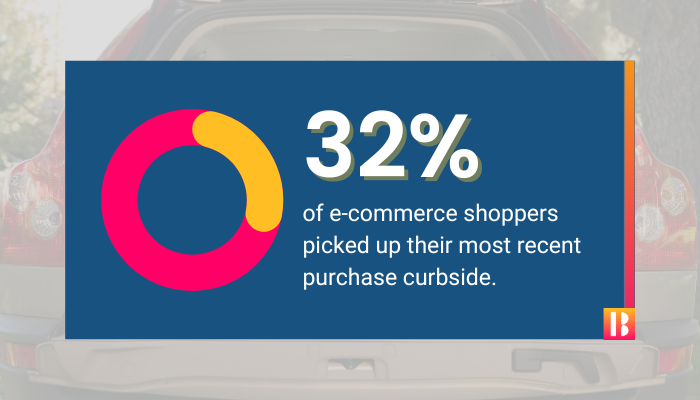Hybrid Shoppers are Loyal. Get Omnichannel Data for Growth
74% of grocers say digital shopping has made shoppers less loyal.
But I’m not so sure. I think online shopping will make shoppers more loyal.
Hear me out.
Grocery retailers have the chance to win every moment of purchase and build loyal customers by offering an unmatched experience.
That means:
+ stocking the right products
+ offering conveniences
+ optimizing the hybrid shopping experience
To foster loyalty among their shoppers, grocery retailers are turning to competitive, omnichannel data. Monitoring this data helps you adjust and optimize your price strategies and product selections. More on this later.
Hybrid Shoppers
Without a doubt, more consumers will shop online for groceries in the months and years ahead. Actually, PYMNTS says that 77% of shoppers have already reduced grocery store purchases for at least one category of items. Online shoppers are mostly buying nonfood items like cleaning supplies, personal and health products, and paper goods, but food categories (frozen/canned) are gaining ground.
Led by millennial and bridge millennial age groups, a rapidly growing share of consumers now buy all their groceries online.
Even as people become more comfortable with e-grocery, most still do some shopping in person. The mix of online and in store shopping is known as hybrid shopping and is quickly becoming a preferred shopping approach.
“The trend toward hybrid shopping is increasing. 39% of consumers now buy their groceries through a mix of physical and digital channels, up from 37% pre-pandemic,” explains a PYMNTS study. “Across all age groups, the share of hybrid shoppers remained relatively steady despite the rise of all-digital shoppers, underscoring the systemic shift toward digital channels.”
Customers who adopt omnichannel increase shopping frequency and basket size, generating an incremental spend of 16%.
When it comes to loyalty, ecom may be trending ahead… Online grocery shoppers usually buy from 1 or 2 merchants, but almost half of those who shop in store shop with 3+ retailers.
Ecommerce Grocery Sales
Amazon accounts for 37.7% of all US e-commerce sales (for a total of $431.11 billion dollars).
When it comes to grocery e-commerce:
- Amazon will account for 22% of sales this year
- Kroger reported a 12% increase in online sales during Q4
- Walmart leads the way with 28.4% of US grocery ecom sales
- Instacart is a strong competitor with 21.9% of e-grocery sales
Let’s get back to grocery loyalty drivers. Specifically, let’s talk convenience and price-value.
Convenient Curbside
Online grocery shopping offers conveniences like…
+ No waiting in line to checkout
+ Ability to read product details and compare products
+ Shop anytime, anywhere
+ Curbside pick up
Theatro CEO Chris Todd says that the advantages of e-commerce makes shoppers more impatient with the in-store experience.
I want to zero-in on the popularity of curbside pickup. It drives loyalty because it is convenient.
Customers choose curbside pickup over delivery because it’s convenient, immediate, and less expensive. And good news – the average order value for pick up in 2021 was 23% higher than for delivery. 32% of e-commerce shoppers in the US picked up their most recent purchase in-store or curbside (up from 23% in 2022).
Winsight Grocery writes that click-and-collect (which includes curbside and in-store pick up) climbed again in January 2023, up 4.6% to $6.2 billion, accounting for 57.9% of all online grocery orders for the month.
Grocers, don’t overlook the value of curbside… encourage shoppers to buy online and pick up from curbside services. Not only will you build loyalty, you’ll increase profits.

Pricing Matters
Price comparisons are another big benefit to online shopping. Inflation has made shoppers more likely to switch brands and stores as they hunt the best price-value.
Since late 2021, rising prices for groceries and other consumer goods have disrupted shopping behavior and spurred many consumers to switch stores and retail channels in search of savings.
We all know shoppers place pricing as a key element that influences their loyalty.

72% of consumers say the price is their biggest consideration today when choosing where to shop.
When it comes to pricing, shoppers want grocery stores to offer lower everyday prices. Some research suggests that shoppers prefer a retailer that offers the same deals in stores and online – like digital coupons that can be used at brick-and-mortar locations.
Grocers, when it comes to pricing, get competitive. At the very least, grocery retailers should understand the competitive landscape, list your key value items, do a market basket analysis, and review competitor promotions.
Omnichannel Data and Loyalty
There’s incredible value gained through an omnichannel approach.
Loyal customers are your most valuable asset. 73% of consumers prefer shopping through multiple channels, with omnichannel customers spending 10% more online and 4% more in-store than single-channel customers
To create the best, or maybe the most competitive strategy, you need a comprehensive picture of the market. Increased consumer expectations on convenience, price, and product offerings are here to stay… so it’s time to implement a competitive intelligence program.
An omnichannel competitive intelligence program helps grocers identify opportunities, discover new competition, and promote loyalty. This omnichannel approach to data helps grocers drive growth.
What is omnichannel competitive intelligence? At Bungee Tech, we can provide you with comprehensive coverage of online and offline data. It’s consistent. It’s accurate. It’s actionable. Test out your data via our free 4-week pilot program.
Customers want a unified experience between their online experience and in-store experience. Things like curbside pick up, great product selection, and competitive prices help grocer retailers build loyalty and drive growth.
E-Grocery News and Trends
Outside of convenience and price-value loyalty drivers, grocers are being strategic with e-commerce initiatives. Take a look at recent headlines to see what’s trending now.

Kroger sees ecommerce as a future profit engine.
Let’s talk about why Kroger is betting on ecommerce:
- Seamless will be more important in 10 years than it is today.
- Kroger wants to offer consistent pricing to shoppers across all of its channels.
- The grocery store’s online membership program incentivizes customers to come back.
- Ecommerce is a relatively new foray into retail media with a long runway for growth (RMN more profitable than company’s stores).
Reduce cart abandonment on your ecom platform
Crt abandonment rates could be as high as 77%, leading to estimated losses of $111 billion to $136 billion each year. Based on these figures, with online grocery sales on track to grow steadily (6.5%) from 2023 to 2027, abandoned carts could be costing US grocery retailers over a billion dollars each year.


Ecommerce grocery and generative AI
“Today, you must go beyond the traditional strategy of reaching the right customer, at the right time, in the right place – you must reach them in the right way,” explains The Fresh Market’s chief marketing officer Kevin Miller.




